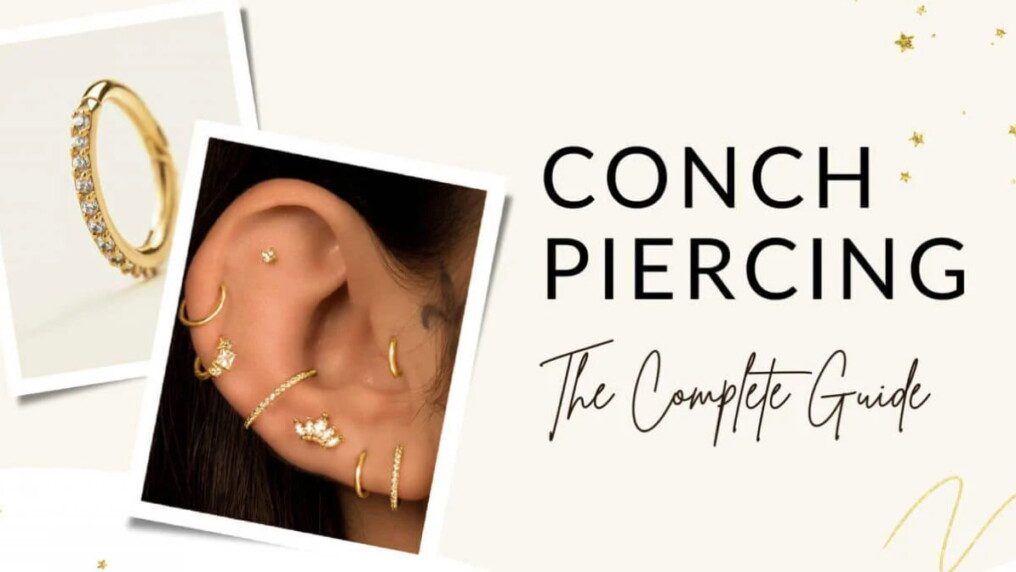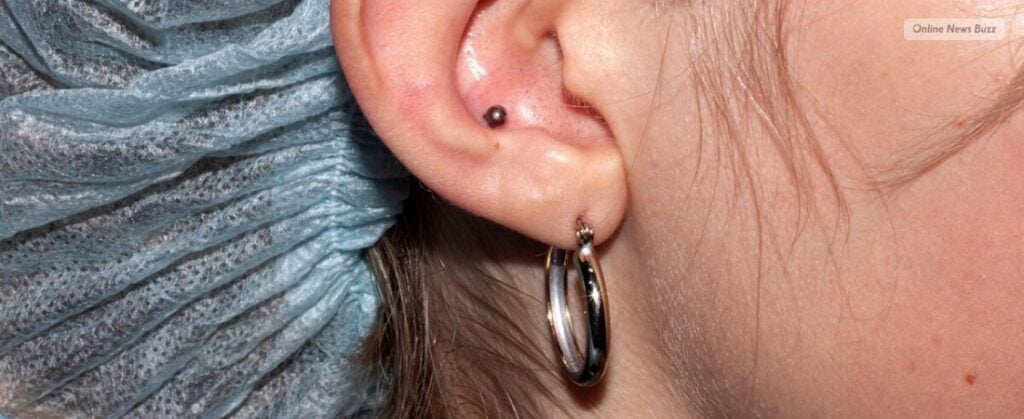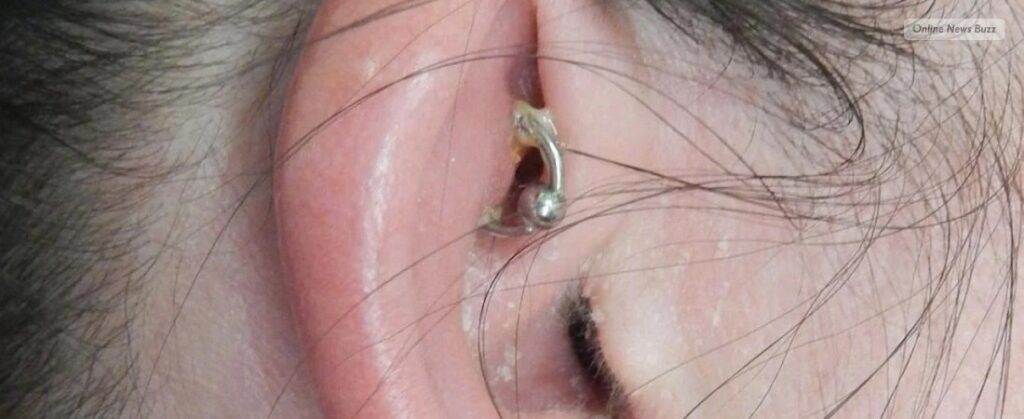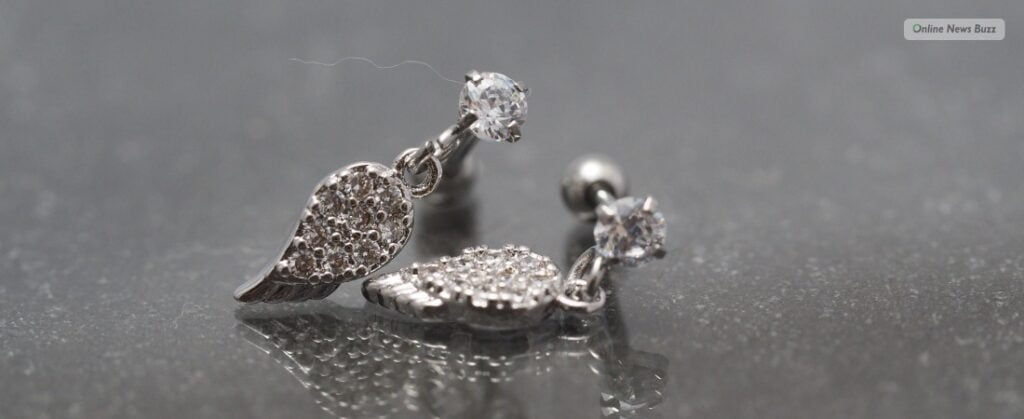
Are you searching for information on Conch Piercing? If your answer is yes, then you have reached the right place!
The idea of fashion has changed a lot in decades. Nowadays, there are a lot more different types of piercing that are done, apart from just belly button and nose. If you want to try Conch Piercing, you need to learn a little more about it before you actually get it. For example, how long does it take to heal?
Keep reading this blog till the end to learn more…
What Is A Conch Piercing?

A conch piercing is known to be located in the ear’s center part – aka the ear area where there is the most room. Because of the placement of the piercing, it is very customizable as well. You can get an outer or inner conch piercing, depending on the shape of your ear.
The outer conch ear piercing is where it allows the ring to go around the outer edge of the ear’s cartilage. An inner conch piercing is when a hole is punctured right through the middle of the ear.
Is Conch Piercing Painful?

Pain is something that is very subjective in nature, hence it is arduous to conclude how painful a person’s conch piercing experience is going to be. It will surely hurt, but it will hurt some people more than others.
When getting your conch pierced, the needle needs to move through a hard plate of cartilage.
If you feel your ear and move it around, then you will be able to determine that the conch is harder and thicker, than other parts of your ear. This generally indicates very clearly that the piercing is going to be more painful than one in most of the other areas – including your earlobe.
Read More: 6 Best Supplements for Hearing Loss
How Long Does It Take For A Conch Piercing To Heal?

The healing process of a conch piercing can take anywhere from around 3 to 9 months. It varies greatly from individual to individual, depending on how much aftercare is provided.
Aftercare
- You need to first clean the area of the piercing at least two times per day – and that too for a period of 3 months.
- Remember to wash your hands in a thorough manner before washing/touching your piercing.
- Go to any medical store and buy a saline solution. Try giving your piercing a solution-bath at the minimum once per day.
- Do not try to rotate your conch piercing during cleaning or at any other time.
- You need to prevent placing of anything over the piercing, including headbands, hats, and even in-ear headphones.
Risks Involved In Getting Such A Piercing
Getting any form of piercings has at least some sort of complications involved with them:
1. Swelling

Inflammation, and swelling – these are the body’s natural responses to trauma. Post piercing, the ear may appear red and puffy. The swelling may go down in a few days, though.
2. Infection

Some older research suggests that the cartilage piercings can carry a greater risk of exposure to infection than lobe piercings. An ear that is infected can be extremely painful and also may require the taking of antibiotics.
Here is a list of the following signs that may indicate an infection:
- nausea, chills, and fever
- tenderness or pain
- red streaks
- swollen, red skin around the piercing
- green or yellow colored discharge coming from the piercing
The above-stated symptoms may start to get even worse and even last longer than a week.
3. Piercing Bumps

There are different types of bumps, that may affect the conch:
- A piercing pimple, which will be in the form of a small pustule which will be located next to the hole
- A form of abscess that may be full of pus
Jewelry Options
Let’s discuss about the jewelry options, if you do end up getting conch piercings. There are a few options when it comes to choosing your conch piercing jewelry.
1. Bars

The majority of the piercers would recommend starting with some kind of “bar” form of jewelry. Bars are actually a perfect option for the initial piercing, as they allow for only a less amount of swelling and are effortless to maintain and clean as well. You can use a curved or straight barbell, depending upon the location of your piercing.
2. Hoops

The small hoops can be a great pick for the outer conch piercings, but may definitely consider skipping them altogether when you get the initial piercing, as they allow for more movement that leads to disruption of the healing process. If you still prefer the style of conch piercing hoop then by all means go ahead and purchase them.
3. Studs

Studs are actually used for conch piercings that have flat backs instead of the traditional ones that are used on ear lobes. This generally prevents the end of the conch piercing stud from poking into the side of a person’s head, especially when one uses their phone or even lies on their side.
These don’t allow for much swelling and hence can be uncomfortable early in the process of healing.
The Best Material To Opt For While Selecting Jewelry
Here is a list of the best materials to opt for while selecting your jewelry:
1. Titanium

Titanium is known to be completely hypoallergenic in nature, which makes it a great option for people with super sensitive skin. The only cons to it being the fact that it costs a lot more than stainless steel ones do.
2. Niobium

This is an elemental metal that is another one of a safe option for almost anyone, even the ones who have susceptible skin. Additionally, it is also frequently found to be less expensive than that of titanium.
3. Surgical Stainless Steel

This is the safest option to opt for the majority of the people. However, it is actually known to contain a small amount of nickel. This low amount is kind of tolerable for most people, even the ones who are sensitive to nickel. But if you have a severe form of nickel allergy, then you might think about skipping this one.
4. Solid 14/16 Karat Gold

This is another great option to purchase as well. You just need to make sure that it is not gold-plated, which will then expose you to other alloys and nickel that are used under the plating.
Read More: The Ultimate Guide to Diamond Pendants in Southlake, TX
To Wrap It Up!
That was all for information related to getting a conch piercing. Thank you for reading up till here. I hope you found the information useful. If there are any other things that you need to know, then please leave your suggestions in the comment box below. Let me know in the comments about your thoughts on the topic.
Read Also:




























